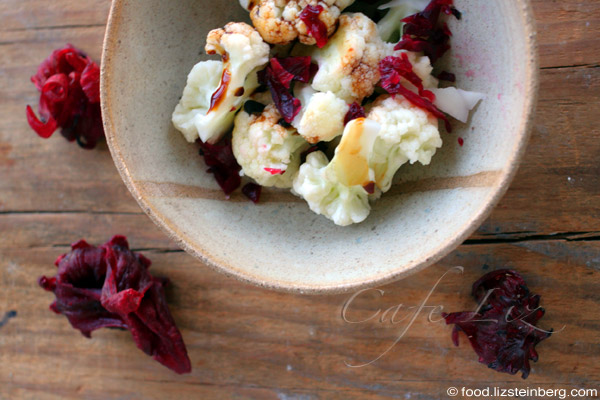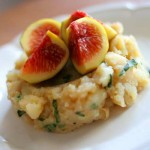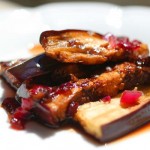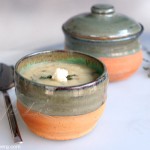
This recipe is about an attempt to eat local, and it’s also a bit about appearances. See, here in Israel we have lots of dried fruit. Some of it is imported, and some isn’t. Some is imported from near, and some travels a long way. Cranberries from the United States, for instance.
Cranberries are a perfect addition to many, many dishes — they’re sweet and tangy, and they add a bright flash of color. But they are absolutely not a local food. They don’t grow here. As an Israeli food blogger, I feel like my recipes shouldn’t depend on them.
Enter the hibiscus. Bright red hibiscus flowers — well, actually, the calyx surrounding the fruit, which resembles a flower in itself — are often dried and used to make tea. They’re also candied. Sweet, tangy and red, they, too make an impressive addition to many dishes, and they’re sold at many (though not all) dried fruit stands.
Bright-red hibiscus tea is practically the national drink in neighboring Egypt, which grows it. Here, it’s nowhere near as ubiquitous but it’s still quite common. Why not use it as the local version of the craisin?
Then my intentions met reality. There’s little documentation about edible hibiscus plants in Hebrew, so I walked around the Levinsky spice market and asked where the vendors got their supply. Thailand. Thailand. And, Thailand.
But it’s grown in Egypt, surely it can be grown here, don’t they import from Egypt, too? I asked in protest. All the vendors could tell me was that they didn’t know of other places that exported candied hibiscus. These guys tend to know their merchandise well.
So that’s the story. Hibiscus is indeed grown in this region, but most of what you’ll find in our markets apparently is imported. You could call it local in spirit, though not in practice. In any case, it’s no less local than cranberries.

So what about appearances? The first time I made this dish, I put everything into a pan and stir-fried. It tasted great, but everything turned brown, which is a pity when starting with such striking ingredients — creamy white cauliflower and ruby red hibiscus. The next version took appearances into account, because if you can do so without damaging the flavor, why not?
For about four servings, or more as a mezze:
- 1 cauliflower head (500 to 600 grams)
- 2 tablespoons date honey
- 1 tablespoon balsamic vinegar
- 1/4 teaspoon salt
- 10 candied hibiscus flowers, and more for decoration (optional)
Prep time: 5 minutes. Cook time: 5 minutes.
Cut the cauliflower into small florets. Steam until just soft using your method of choice — I put the cauliflower into a glass bowl with a lid, and microwave for 3 minutes.
Mix the date honey, the balsamic vinegar and the salt and heat in a saucepan for a minute or two. It will reduce slightly. (Lazy chefs: Don’t heat, just mix).
Finely chop the candied hibiscus flowers. Mix with the cauliflower. Drizzle the dressing on top just before serving, and garnish with an extra flower or two if desired.





